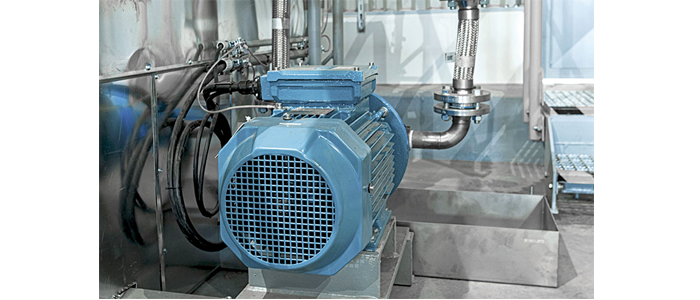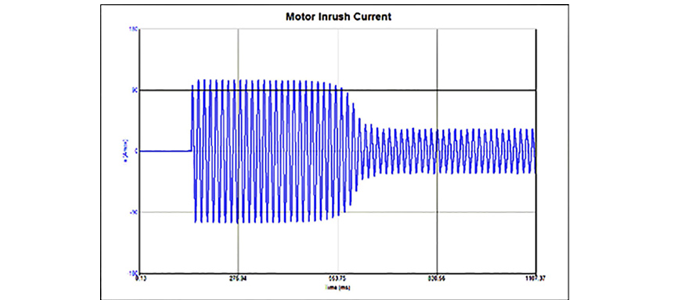- +61 7 3374 2877
- Email Us
Motor inrush current – the large spike of current drawn by a motor as it starts up – can have an adverse effect on supply networks and protection systems, as Andy Sagl, Product Manager at Megger, explains.
Then an AC motor is energised using a conventional contactor starter, a large spike of current flows through the motor and the conductors feeding it. This current, which is well in excess of the rated current shown on the motor’s nameplate, is needed to overcome the combined inertia of the stationary motor shaft and the load the motor is driving.
When three-phase power is applied to a motor, the stator windings, which are the stationary windings in the motor frame, are energised. The current in these windings generates a rotating magnetic field which induces current in the rotor winding, which is the winding on the rotating part of the motor. The rotor current also produces a magnetic field and the fields produced by the stator and rotor interact in a way that causes the rotor to rotate.

The rotor speeds up until it reaches a speed close to synchronous speed, which is the speed of the rotating field produced by the stator. The rotor never quite reaches synchronous speed however; because if it did, there would be no induced rotor current and the motor would produce no torque. The difference between the actual speed of the rotor and the synchronous speed is usually expressed in terms of slip, where: slip = (synchronous speed – speed of rotation) ÷ synchronous speed.
When the motor is stationary, the slip is 1. When it is running normally, the value of slip depends on the load, but is typically ranges from around 0.05 for small motors to as little as 0.01 for large motors.
At start up, the slip = 1 and this large value of slip is the biggest contributor to the inrush current. As the rotor speeds up, the slip decreases and the inrush current falls to the normal running current of the motor, as shown in Figure 1. The magnitude of the inrush current depends on the type of motor and the starting method. For standard industrial motors started directly on line, inrush currents between eight and ten times the normal running current are typical.
